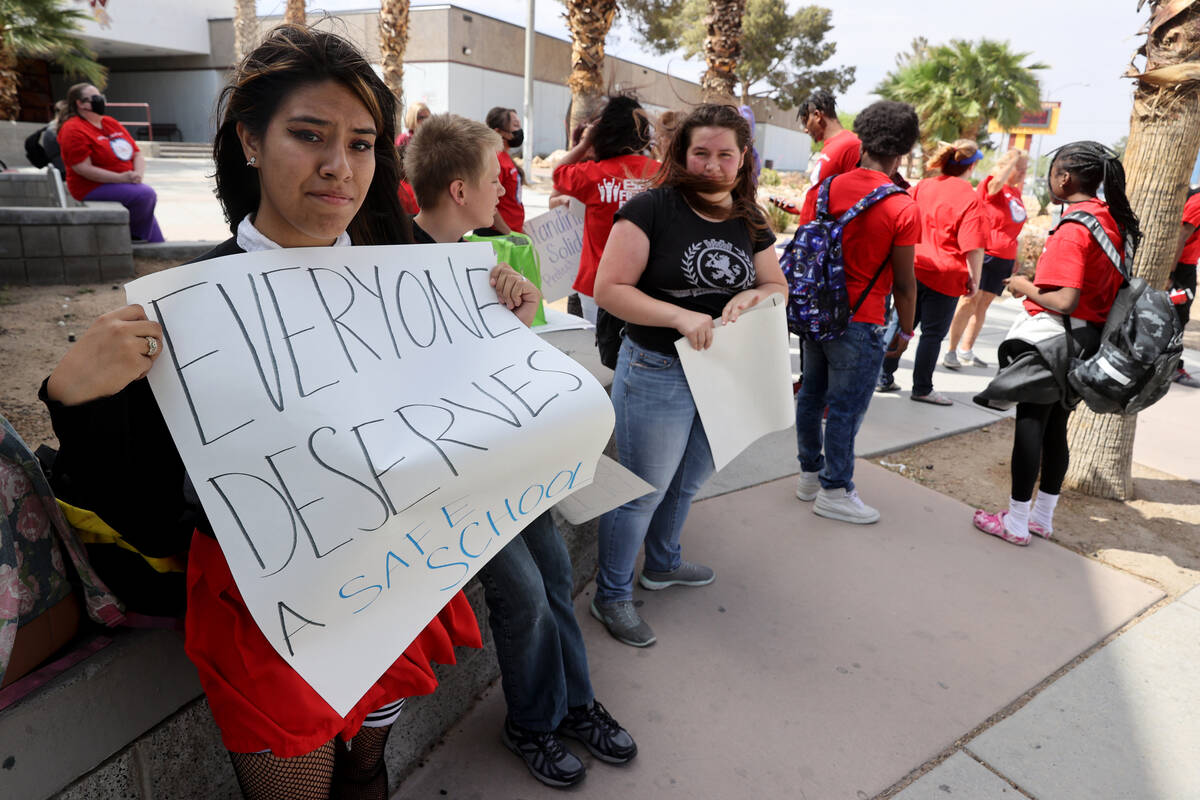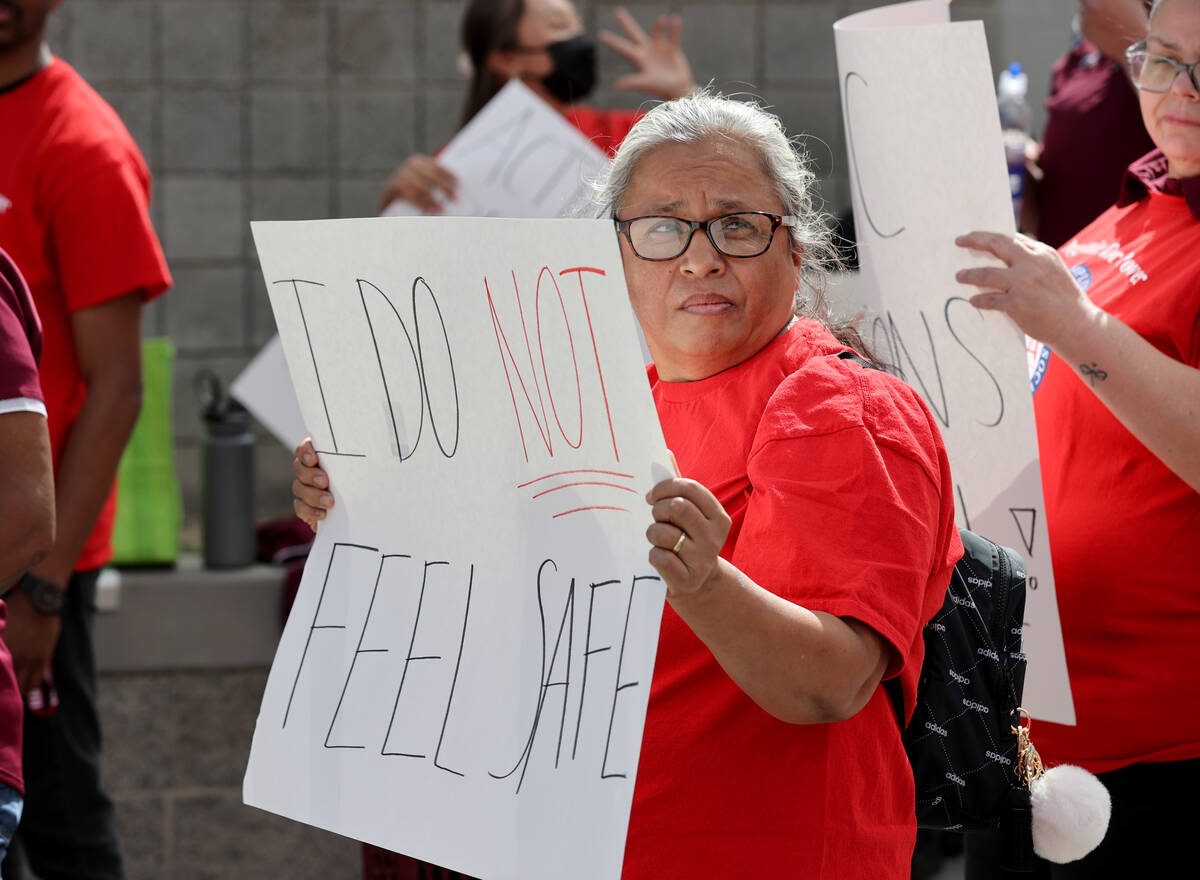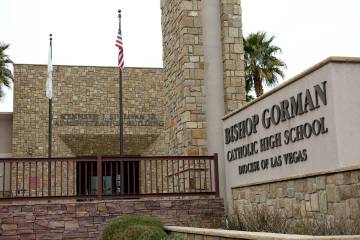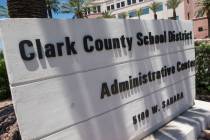CCSD’s teacher shortages raise concerns about school safety
During the last school year, Shannen Dubose watched as quality teachers at her daughter’s middle school left almost immediately, sometimes without warning.
Sometimes her daughter’s teachers were replaced by long-term substitutes, but in other cases, her daughter was placed in another teacher’s classroom. “It just created chaos and confusion,” Dubose said.
Her daughter attended Escobedo Middle School in northwest Las Vegas, which currently has the second highest teacher vacancy rate in the district, a rate of nearly 40 percent, according to recent district numbers. Employees at the school are overwhelmed and don’t have the resources they need, Dubose said.
And they’re not alone.
Amid a nationwide teacher shortage and rising dissatisfaction among those in the profession, more than a third of Clark County schools currently have a teacher vacancy rate of 10 percent or more, while 26 schools have a vacancy rate higher than 20 percent. The numbers don’t account for vacancies in special education classrooms.
The vacant positions could mean larger class sizes, cuts to extracurriculars such as art and music and teachers being forced to give up their preparation time when students return to campuses in the fall, according to Vicki Kreidel, a second-grade teacher and president of the National Education Association of Southern Nevada.
“If you’re going to prioritize, you’re going to choose to have a teacher teach reading instead of art,” she said.
The district will discuss the shortages — and possible solutions — at its regular board meeting on Thursday.
Ultimately Dubose, the Escobedo Middle School mother, moved her family to Clarksville, Tennessee, this month in pursuit of a better education system.
Results of shortage
Since she started working in the district nine years ago, Kreidel said, she’s never seen a vacancy rate that’s so bad that schools couldn’t reopen.
But having worked at an elementary school that had several vacancies, she said the first thing to go will be humanities, art, music and other extracurriculars. Class sizes also will increase as classes are combined, Kreidel said.
“I’ve had first-grade classrooms with as many as 27 kids,” she said.
Teachers also may be forced to give up their preparation period, the 50 minutes each day that educators use to catch up on tasks, grade papers and get their materials ready.
While teachers typically can’t accomplish everything they need to get done in that preparation period, without it, teachers will have to default to doing all of their planning for the day at home, Kreidel said.
“That gets old really fast,” she said. “It just adds to what you have to do at home.”
Kreidel also pointed to safety concerns that would be exacerbated by teacher vacancies.
The district experienced a surge in violent incidents on school campuses this year, which culminated in the brutal assault of a teacher at Eldorado High School in April.
Teachers, support staff and students at Eldorado rallied outside the school following the attack to call on the district to fully fund positions and hire more staff — including campus monitors — to help keep schools safe. Eldorado’s vacancy rate was not included on the list of schools highlighted by the district.
In response to safety concerns, the district stepped up the police presence at schools and has begun rolling out instant alert systems that staff can use to call for help or to trigger a campuswide emergency lockdown.
But Kreidel said the issue of school safety hasn’t been properly addressed, particularly in middle and high schools, and the panic buttons aren’t going to fix the root causes driving violent behavior.
“The reality is, in schools, you have to have a set ratio of adults to kids for it to be safe,” she said. “If you don’t have enough adults, the kids are going to be running it.”
A district spokesman confirmed on Wednesday that the vacancies will be addressed by buying teacher preparation periods and combining classrooms. The district also will use substitute teachers, deploy central office employees and reassign school-based, non-classroom strategists to deal with the vacancies.
Disproportionate effect
The teacher shortages in the Clark County School District underscore a national trend of educators exiting the profession on the heels of the pandemic.
A Gallup poll from earlier this year found that 44 percent of K-12 employees “always” or “very often” feel burned out at work, outpacing the percent in all other industries.
John Vellardita, executive director of the Clark County Education Association, said the rate at which teachers leave a large urban school district is roughly 9 percent.
That means annually, the district can expect to have 1,500 to 1,700 vacancies a year, something that has been consistent over the last decade, he said.
But teacher vacancies in Clark County are not equitably distributed, and groups of already-marginalized students will be disproportionately affected by the shortages.
Nearly 80 percent of students at schools with at least a 20 percent teacher vacancy rate are Black or Hispanic, according to the district’s numbers, with the affected schools focused primarily in the northern part of the valley.
The schools with the highest vacancy rates include:
— Kelly Elementary School: 40.7 percent.
— Escobedo Middle School: 39.5 percent.
— Findlay Middle School: 38.5 percent.
— Johnston Middle School: 31.5 percent.
— Cashman Middle School: 31.3 percent.
The Las Vegas Review-Journal reached out via email Friday to schools with the highest vacancy rates but did not hear back from the vast majority. Some principals declined to comment.
Among those schools is Indian Springs Middle School, which had a 22 percent vacancy rate — the 18th highest rate among the more than 360 campuses in the district.
But that vacancy percentage, while still high, is somewhat misleading, according to Principal Brian Wiseman. That’s because the school, when fully staffed, has only nine teachers.
Wiseman said Wednesday that one of two middle school vacancies had been filled, dropping the rate to 11 percent.
The rural community 45 miles northwest of Las Vegas and near Creech Air Force Base has about 340 students in kindergarten through 12th grades and 34 teachers.
A couple of teachers submitted resignations on the last day of school, Wiseman said.
When people do leave, he said, they’re usually retiring rather than transferring to other schools. Wiseman said the current situation with vacancies is new for him.
One factor: high gas prices. A few teachers live in Indian Springs, but the majority commute from the Las Vegas area.
“Typically, teachers don’t leave here,” said Wiseman, who has been at the school for 13 years and has educators who have been there longer. “Staff turnover for us is typically very, very low.”
Solutions
Solutions being discussed by the district Thursday to address the vacancies will include advertising a recent $7,000 bump for starting teacher pay and considering more incentives to hire and retain teachers at schools with the greatest need.
Vellardita said the district will be in a constant hiring mode throughout the school year and likely won’t fill all of its positions by the first day of classes.
“When people talk about, ‘We’re going to have so many vacancies that we’re not going to be able to reopen schools,’ I find that very hard to believe,” he said. “The school district is still recruiting, and they’re now in a position to recruit educators at a higher salary than they were before.”
Once the dust has settled with hiring for next school year, Wiseman, the Indian Springs principal, said he’s confident one of the community’s two remaining vacancies will be filled by the time school starts in August, but he hasn’t received any interest or applicants for the Spanish teacher job.
If that job isn’t filled, middle school students would take Spanish online during the upcoming school year, which is not his preference, he said.
Kreidel also said staff at schools with a high vacancy rate should be interviewed to assess whether a hostile or toxic environment is leading to teacher vacancies.
“If a school has a very high vacancy rate and they’re not able to hire teachers, the question would be: Why?” she said. “What’s going on at this school that makes it a place where people don’t want to work?”
Vellardita said he disagrees with the narrative “propagated by some” that the climate in school buildings is toxic. The union knows what buildings have bad leadership and is addressing those issues with the school district, he said.
School districts need more money and a multiyear plan from the state to graduate enough educators to address the pipeline issue of educators into public schools, Vellardita said.
Right now, he said, the district doesn’t have that.
“This is June. In two weeks we’ll be in July,” he said. “We’re seven months away from a legislative session in Nevada. That’s where the focus needs to be.”
Contact Lorraine Longhi at 480-243-4086 or llonghi@reviewjournal.com. Follow her @lolonghi on Twitter. Contact Julie Wootton-Greener at jgreener@reviewjournal.com or 702-387-2921. Follow @julieswootton on Twitter.
























